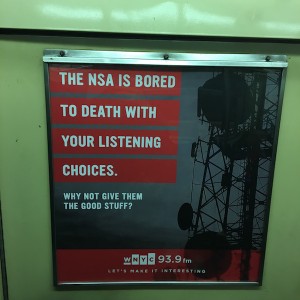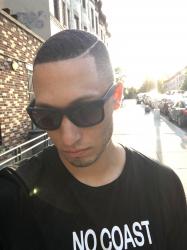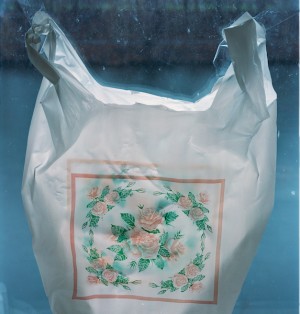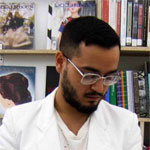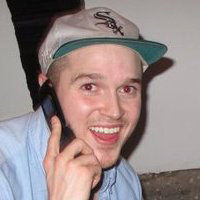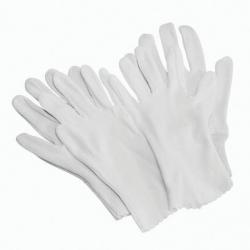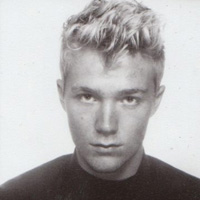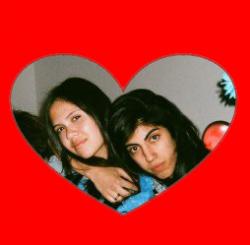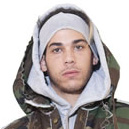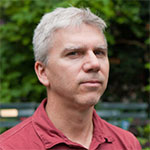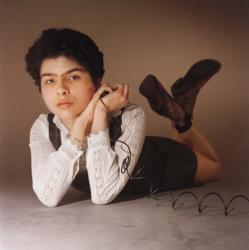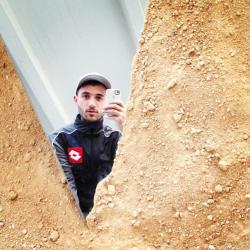Lafayette Anticipation associate curator Anna Colin talks to artist Tyler Coburn about Ergonomic Futures, a speculative project engaged with art, design, science, anthropology and writing. In this interview, Coburn discusses the research, production process and network of collaborators of a multilayered project ultimately concerned with the futures of humankind. Anna Colin: When one comes across your museum seats Ergonomic Futures (2016—) in contemporary art exhibitions—and soon in natural history, fine art, and anthropology museums—they look… [read more »]
DISmiss | Donna Williams on Neurodiversity

Donna Williams, Trust.
Donald Trump, leader in the GOP bid for US Presidency, theorizes that autism is caused by vaccines, and that this belief informs his platform regarding public health and disability issues. Autism, its imagined causes and its relation to various social issues, is up for national debate—but actual autistic individuals are never included in the conversation.
Advocates for disability justice are marginalized by the U.S. public sphere, while their identities are scrutinized and co-opted by individuals like Trump or organizations like Autism Speaks, who encourage national anxiety regarding neurodevelopmental difference for his own ends. But there are those who fiercely resist such co-option by the neurotypical majority. Advocacy organizations like Autism Network International (ANI) broadcast a fervent anti-cure message from the perspective of those most affected by issues regarding neurodiversity: autistic people. One of the most internationally influential self-advocates for neurodiversity is Donna Williams. Williams is a writer, artist, singer-songwriter, and sculptor best known for her bestselling autobiography, Nobody Nowhere. I spoke with her about the entanglements among questions of disability, gender, technology, and advocacy.

Donna Williams, Exposed.
Jack Kahn: So what brought you to autism advocacy? And how would you say that that advocacy works within a larger social context?
Donna Williams: I became a “success” in non-autistic terms. I was a person with autism who had achieved functional verbal communication, managed to work a job, drive, make friends and live in a relationship. But there’s something wrong when the celebration of what you achieved comes along with an expectation to see what you were as something you should feel pride in having left behind. Sure, as I adapted better and better to my autism I became more ‘functional, but this didn’t mean everything I was when less ‘functional’ was somehow one big bunch of pathology. I experienced bullying, exclusion, labelling, and being ‘tolerated’ and I think society can do better than that. I think advocacy is part of expecting society to do better than that.
JK: Self-advocacy work such as yours often occurs under the banner of “neurodiversity”. How would you define ‘neurodiversity’? Is “neurodiversity” an issue exclusively for autistic self-advocates?
DW: We’re all walking bunches of ‘fruit salad’… of neurodiversity. It’s not exclusive to people with autism. A diabetic, an alcoholic, someone with MS or living with trauma or grief or having a breakdown are on that side of the imagined neurotypical ‘bell curve’. I enjoy understanding my autism assemblage among the cognitive assemblages any human being may be living with. Mine may have a particularly autistic flavor to it, but theirs may be no less neurodiverse.
JK: “Neurodiversity” has become an important topic on sites like Reddit, Tumblr, and WrongPlanet. What role do you think the internet has played in the rise of the neurodiversity movement?
DW: Jim Sinclair, Xenia Grant (then Kathy Lissner) and I formed ANI in 1994 as a pen pal snail mail list. Jim took it online and it was the first online autism movement run for and by people on the spectrum. From there satire became progressively more militant and political. Our original intent was more about sharing cultures, building bridges, an inclusive movement.
JK: Do you think that technological progress is liberatory for the disabled? Or dangerous?
DW: Both. AAC (Advanced Audio Coding) boomed and gave voice to so many voiceless people. Online forums allowed people everywhere to connect but progressively became a minefield: prescriptive, fixated with stereotypes and ‘peer diagnosis.’ Often it became quite ‘Lord of The Flies,’ with people on the spectrum who had been bullied in the non-autistic world now cyberstalked, and flamed by others identifying on the spectrum if they didn’t fit the expected mold, rocked the boat, or questioned the status quo. Nonetheless, others worked to change society, uncover inequalities, inhumanities, or draw on their own pasts to give hope to others–– though their good intentions were not always welcomed.
JK: Given its history as a pathologizing psychiatric label, do you identify with the term “autism”? Why or why not?
DW: I was diagnosed in 1965 at age 2 when autism was still ‘infantile psychosis’. I grew up introduced as ‘psychotic’ and didn’t understand that autism had outgrown this description until I was in my mid 20s in 1990. Because my own autism involves a collagen disorder that results in altered brain connectivity and immune dysregulation, food intolerances and allergies, but also a brain injury as a child born to an alcoholic mother and agnosias due to brain injury before age 3, as well as severe chronic fight flight for my first 40 years, I can’t see my autism as one thing. It’s an assemblage. And working with over 1000 people on the autism spectrum as a consultant, each fruit salad was a different combo, and as you addressed them, their presentation as ‘autistic’ altered, so I had to concede that autism was an adjective that described the impact of these ‘fruit salads’ for people… that it was archaic to see autism as a noun or something clearly definable in any one size fits all way. I’m autistic, but I’m Donna and many things make me who I am… my cognitive hodge-podge which collectively presented and presents as my autism, but I am also my attachments, identifications, experiences, opportunities… I’m not invested in my label. I think it was a fashion, a fiercely defended one, a highly trending one, to follow Temple’s mantra of being only the sum total of one’s autism. Whether one IS their autism or HAS autism depends on one’s unique embodiment, how much of it is experienced as part of self, how much of it is experienced as contorting or an obstacle to the expression or experience of self, and that all differs from person to person.
JK: Tell us about some of your artistic inspirations.
DW: Being faceblind.
Being context blind.
Being sensing and mapping pattern, theme, feel.
Being unable to process simultaneous sense of self and other until I was 35.
Having fragmented visual perception until I was 28.
Seeing through my hands.
The importance of movement, texture, color, atmosphere to someone from a background of meaning deafness and meaning blindness.
How much we say without words.
But also being exuberant and naturally drawn to expression.
Having had an arty father and paternal grandmother.
JK: How does your art tie into your activist work?
DW: I think my art validates the world of autistic communication, autistic interaction, autistic perception. It moves people, connects with them… the solitude of my characters, the way each is so in their own world yet aware of each other. My work in no way mourns autistic experience. Sometimes, though, it has challenged the interaction between autistic and non autistic worlds.

Donna Williams, The Outsider.
JK: It seems like your personal experience informs the work you do very much. What are the stakes in that? Does transparency ever make you feel vulnerable?
DW: I think one must feel personally in art for the passion to speak through the art. I used to feel too much acute Exposure Anxiety to dare do art… to express anything that could observably and permanently exist in the external world for the observation of others. But that was equally a trap because eventually it extinguishes all expression and with it life. So using art as a bridge was part of the truce… and a symbol that the simultaneous battle to join the world and battle to keep it out was over. Accepting others could experience my work, connect with it in their own world, connect with me through it, and often to their own children through it, I came to see this as an atonement for my invisible war, my futile war, to which I lost so much time and almost lost my life.
JK: Do you see art-making as a healing practice? How can art provide alternative modes of healing to psychiatry?
DW: Totally. Art comes from different places. Intuitive art comes from one’s preconscious mind… this is why I call my figurative works dreamscapes. Our conscious minds block the free flow of expression from our preconscious, we filter it, whitewash it. If one can express directly from that place it is a transformative self-dialogue, one the psychiatrist may be invited to.
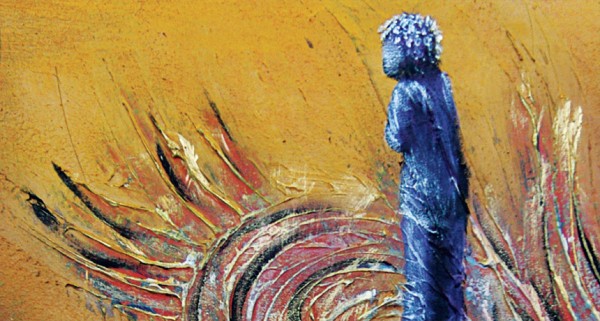
Donna Williams, To Dare.
JK: Do you think that mental health care is too individualistic? How can we imagine community-based forms of advocacy that do not involve the pathologizing disabled people?
DW: I think mental health care should involve more social work and more working with communities to make them more diversity friendly. At the same time because each person’s ‘autism fruit salad’ differs, an individual approach is also needed… almost like a debriefing session,a 101 on how to navigate a world of oranges when one is an apple, how to celebrate how well one has done as an apple without doing so by the orange’s standards.
JK: Do you identify as a feminist?
DW: An egalitarian. My father and mother each misused their own gender in abusing each other, in creating a home that was dangerous and endangering ; their misogyny was equally appalling. The mindsets they each came from were ones of inequality, indignity, discrimination. My life with them and into homelessness in my teens and 20s was a product of this and the same continuing issues in society. When one’s mother is one’s abuser, even a pedophile, a matriarch with extreme power, it is harder to easily call oneself a feminist. So it’s easier to see myself committed to equality, dignity, rights. I survived ten years of sexploitation by men ;secondary school experiences and university and the workforce all made me no stranger to male misogyny. Yet I cannot deny that women too have made men and children victims of such things.
JK: Is neurodiversity a feminist issue?
DW: I think it’s an equality issue, an inclusion issue. I think men and women are both out there fighting for it. It doesn’t make sense to talk about neuroDIVERSITY and then claim it as being more a feminist issue than a human one that equally affects men and women. But it’s also the case that most of the leading figures in autism self-advocacy have been women.
JK: How do you imagine the future of the disability rights movement?
DW: I think we’ve had our label lust, I think we’ve fallen out of love with stereotypes, and that we’re facing our own hypocrisies and starting to build supportive communities without the competitive “who’s in, who’s out?” mentality that had dominated thus far. I feel the martyr flags of die-hard curebies [those who believe that autism is a disease to be cured] has become transparent and their rhetoric thin. I think the culturalists are become less fixated with their own supremacy and specialness and are turning more to the practical issues of changing the stereotypes, the judgements, the discrimination in organisations, in the media, in services, and even in families. I think we’ve moved on from thinking ‘we are one voice’ to accepting and celebrating that we are a collective of diverse voices.
JK: Can you describe your utopia?
DW: I’d like to see people equipped to advocate about their embodiment, how it works, to make the translations between autistic and non-autistic ‘normalities’. I’d love to see people on the spectrum build inclusive diversity friendly dinner clubs, activity clubs–– physical communities where they can gather and support each other. I’d like us as a community to listen as much as we shout, to take on board the normality others are coming from without pandering to it, and through the respect of doing so be in a position to expect the same.
More on Donna Williams.
DISmiss is an ongoing column celebrating our version of the It Girl you should know about. Know someone who’s got the IT factor? Send suggestions to [email protected]





